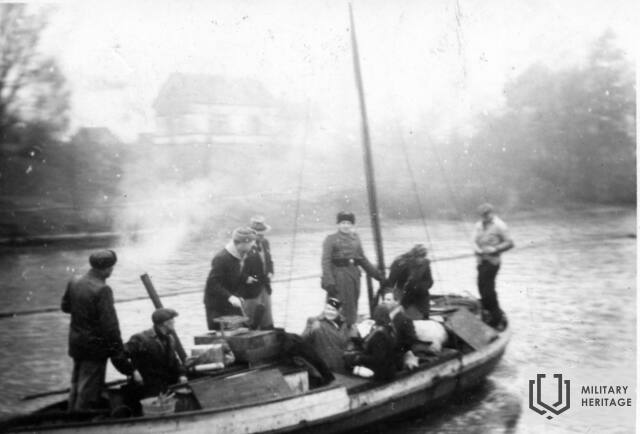Paviluosto vietos istorijos muziejaus ekspozicija
Muziejus

Paviluostos kraštotyros muziejuje veikianti paroda, pavadinta „Paviluosta, uždara teritorija“, pasakoja apie kasdienį gyvenimą Paviluostos mieste sovietinės okupacijos metu; konkrečiai apie vykdomąją valdžią, pasienio zoną, žvejų kolūkį, kultūrinę ir socialinę veiklą. Be nuolatinės ekspozicijos, yra interaktyvi ir emociškai turtinga skaitmeninė ekspozicija dviem kalbomis bei audiovizualinė instaliacija, kurioje rodomas filmas apie Paviluostą.
Muziejuje taip pat atidaryta nauja paroda pavadinimu „Paviluostos auksiniai smėlio grūdeliai“. Skaitmeninėje instaliacijoje pristatomi seni įvykiai, Paviluostos įkūrimo istorija ir svarbiausi įvykiai nuo 1918 m. iki šių dienų. Karinis paveldas yra pagrindinis Nepriklausomybės karo skyriaus, kuriame pasakojama apie Latvijos laisvės kovotojus ir sovietinės okupacijos laikotarpį, akcentas.
Panaudoti šaltiniai ir literatūra:
http://www.pavilosta.lv/lv/kultra/muzeji/pvilostasnov
Susijusi laiko juosta
Susijusios temos
Susijusi istorija
Pasienio režimo zona
Apie laikus pasienio režimo zonoje.
Pavilostnieki
Pavilostos gyventojai Aina Jakovļeva ir Irina Kurčanova dalijasi prisiminimais apie sovietmetį Pavilostoje.
Pirmasis pabėgėlių laivas „Centība“ iš Bambalio
1944 m. spalio 31 d. laivas „Centība“ išplaukė iš Kuržemės pakrantės. Šio laivo išvykimą, remdamasi kelių bendrakeleivių prisiminimais, atkūrė Latvijos Centrinės Tarybos sušaukėja Valentine Lasmane.
Pabėgėlių perkėlimo valtimis punktas iš Kuržemės pakrantės į Švediją prie „Pāžių“ namų
Viena iš svarbių perkėlimo vietų buvo netoli „Pāžių“ namų, kur dabar pastatytas paminklas – „Vilties burė“. „Laivai reguliariai atplaukdavo ir daugiausia žmonių išvykdavo iš „Pāžių“, – sako I. Freibergo prisiminimai.
Užjaučiantys Lietuvos pakrančių apsaugos vyrai
Prieš daugiau nei 70 metų Lietuvos pakrančių apsaugos pareigūnai buvo sušaudyti už tai, kad padėjo savo kaimynams, valtimis iš Latvijos išplaukusiems pabėgėliams, pasiekti Švediją. Kai vokiečių okupacinė valdžia apie tai sužinojo, ji žiauriai...
Kuržemės pakrantė – uždara zona
Šaltojo karo metu visa Kuržemės pakrantė buvo uždara zona visuomenei – čia pagrindinius sprendimus priėmė sovietų pasieniečiai, turintys sargybos postus tam tikru atstumu ir stebėjimo bokštus su prožektoriais paplūdimyje. Civiliai asmenys pajūryje buvo leidžiami tik dienos šviesoje.

























